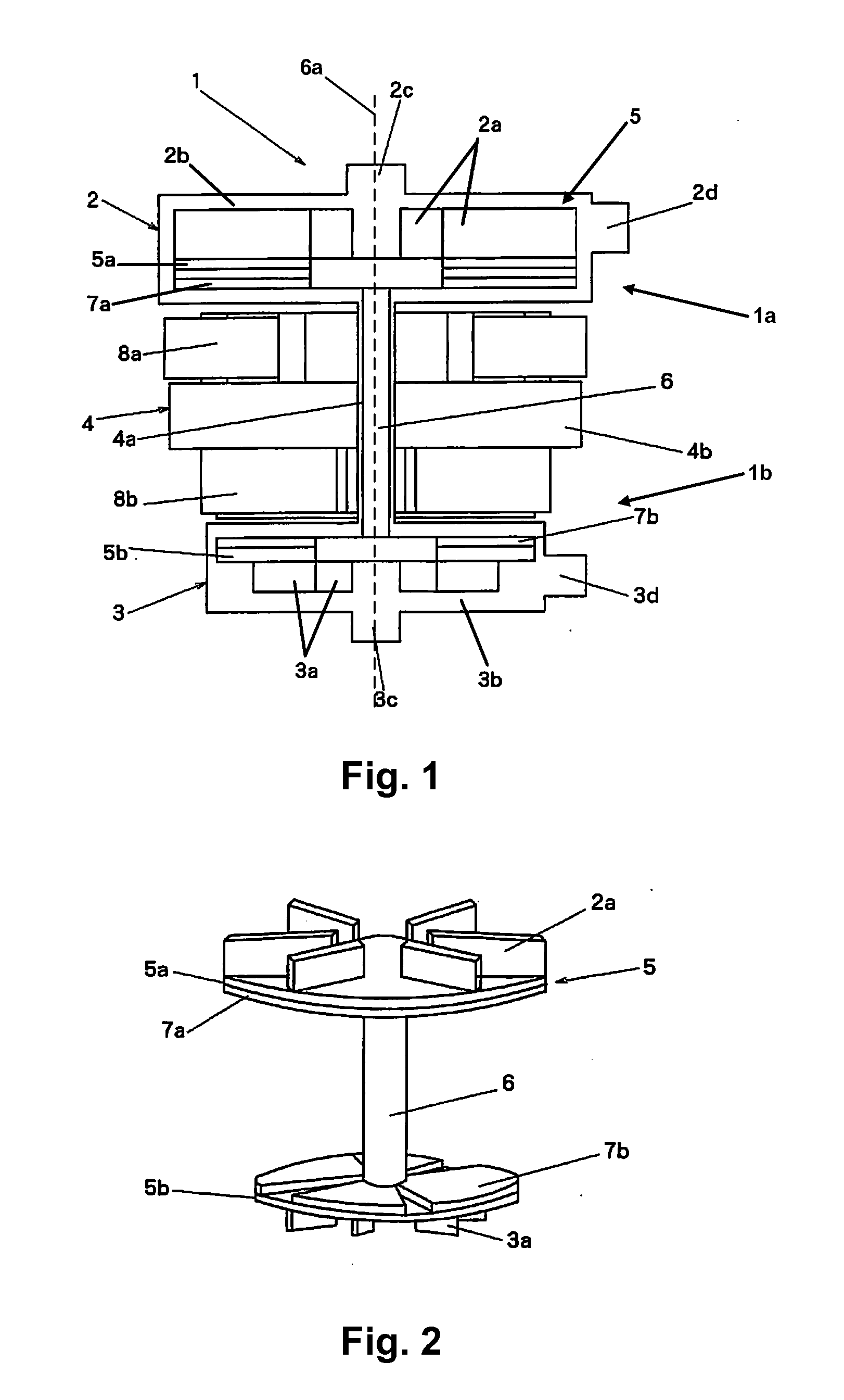Heart pump controller
a heart pump and controller technology, applied in the field of controllers for heart pumps, can solve the problems of increasing the use of mechanical device therapy for treating heart failure, unsuitable for implantation in a subject, and limited number of donor organs for heart transplantation, and achieve the effect of reducing the outlet flow pressur
- Summary
- Abstract
- Description
- Claims
- Application Information
AI Technical Summary
Benefits of technology
Problems solved by technology
Method used
Image
Examples
Embodiment Construction
[0166]A first example of a pump apparatus will now be described with reference to FIGS. 1 to 5. In particular, FIG. 1 is a sectional view of a pump apparatus 1, and FIG. 2 is a perspective view of first and second rotors of the pump apparatus 1.
[0167]In this example, a first pump 2 is arranged in a first part 1a of the pump apparatus 1, and a second pump 3 is arranged in a second part 1b of the pump apparatus 1. In this example, at least part of a magnetic bearing and / or a drive, in this example a stator 4, is provided between the first and the second pumps 2, 3.
[0168]The pump apparatus includes an impeller 5, having a first rotor 5a and a second rotor 5b arranged in the first and second parts 1a, 1b, with the stator 4 being provided therebetween. The first and second rotors 5a, 5b are connected via a shaft 6 rotatably mounted within the pump apparatus to allow rotation about, and axial movement along an axis 6a in the connecting tube 4a, which in this example extends through the st...
PUM
 Login to View More
Login to View More Abstract
Description
Claims
Application Information
 Login to View More
Login to View More - R&D
- Intellectual Property
- Life Sciences
- Materials
- Tech Scout
- Unparalleled Data Quality
- Higher Quality Content
- 60% Fewer Hallucinations
Browse by: Latest US Patents, China's latest patents, Technical Efficacy Thesaurus, Application Domain, Technology Topic, Popular Technical Reports.
© 2025 PatSnap. All rights reserved.Legal|Privacy policy|Modern Slavery Act Transparency Statement|Sitemap|About US| Contact US: help@patsnap.com



